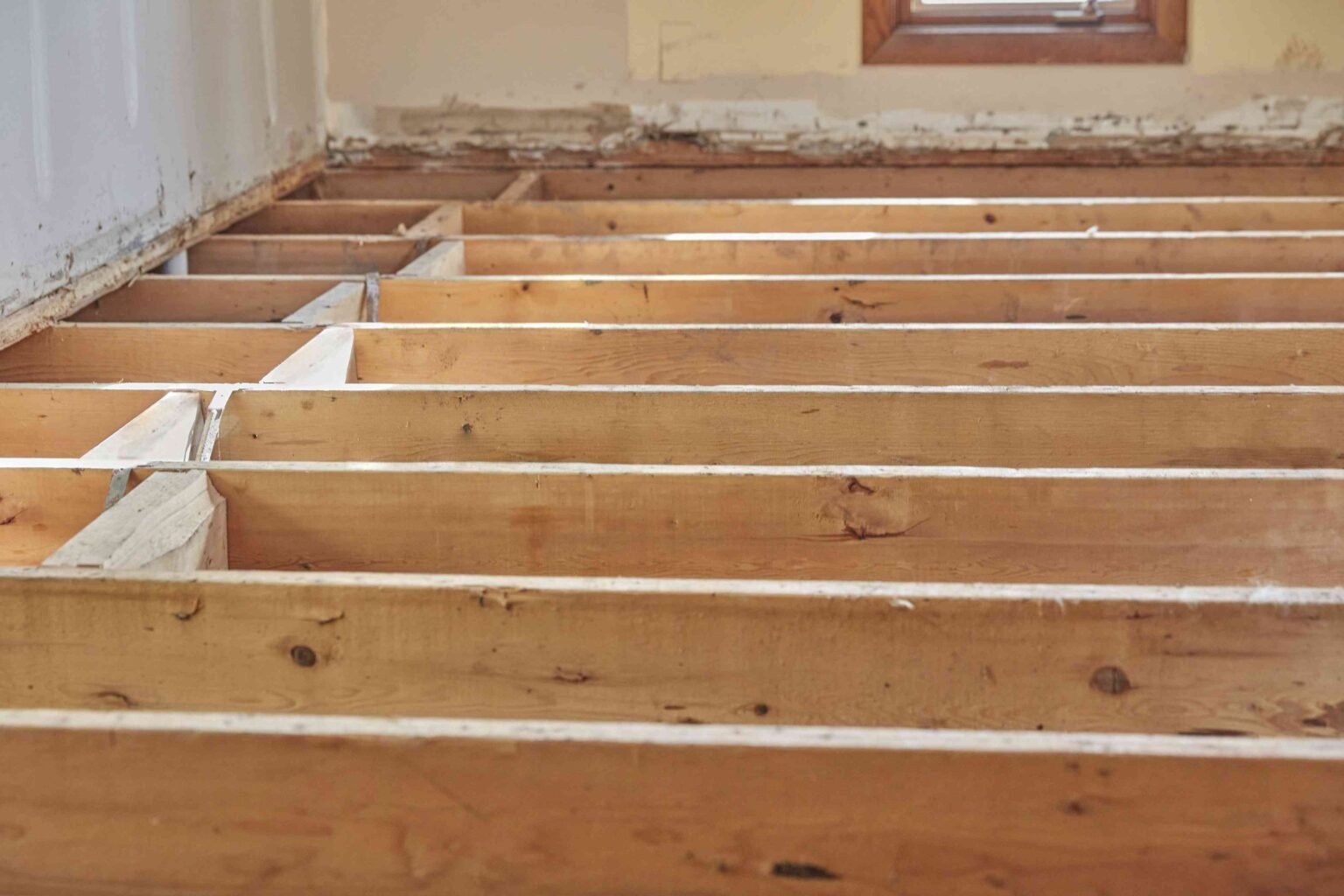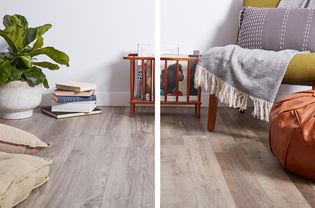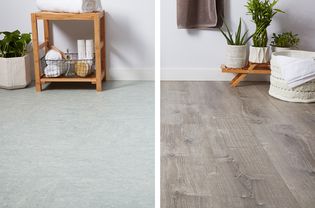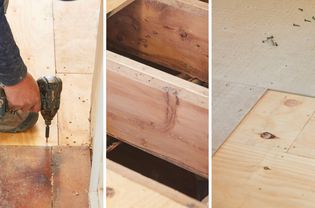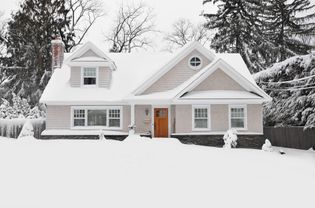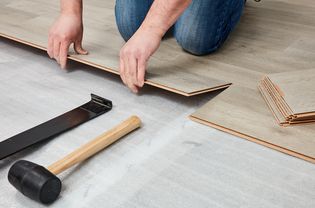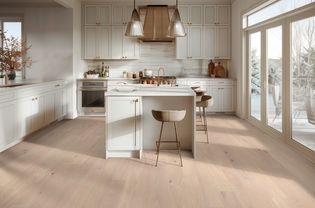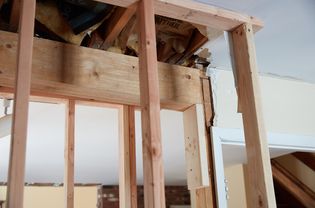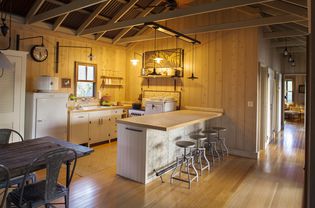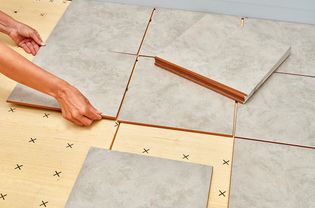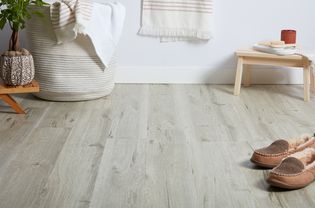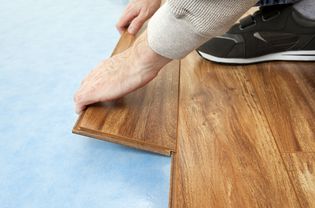Act as an expert content writer specialized in Interior Walls and Ceilings design, who speaks and writes fluently in French. Translate the article below into French. Continue writing until you finish translating the entire content from beginning to the end. Make sure the translation is linguistically accurate, and conveying the meaning, facts and figures of the original text. Make sure the content generated is well written and does not sound like a translation and reflects an awareness of the culture of French people. Don’t talk about Yourself or Your Experience. Don’t Self-reference. Don’t explain what you are doing. Write the content in HTML format and Keep the images and the structure of the article as they originally are. The article to translate:
Floor joists and joist spans are integral parts of your home because they make up the foundation of a house. It helps to understand the basics of floor joists and joist spans, especially if you need to obtain a building permit when you are adding a deck or an addition to your house. Learn some of the basics of floor joists, what a joist span means, and how they affect your home—and your next remodel.
What Is a Floor Joist?
Floor joists are horizontal wood boards or steel slats that are evenly spaced apart on which the flooring material sits. The joists run perpendicular to the beams for support.
Parts of a Floor Frame
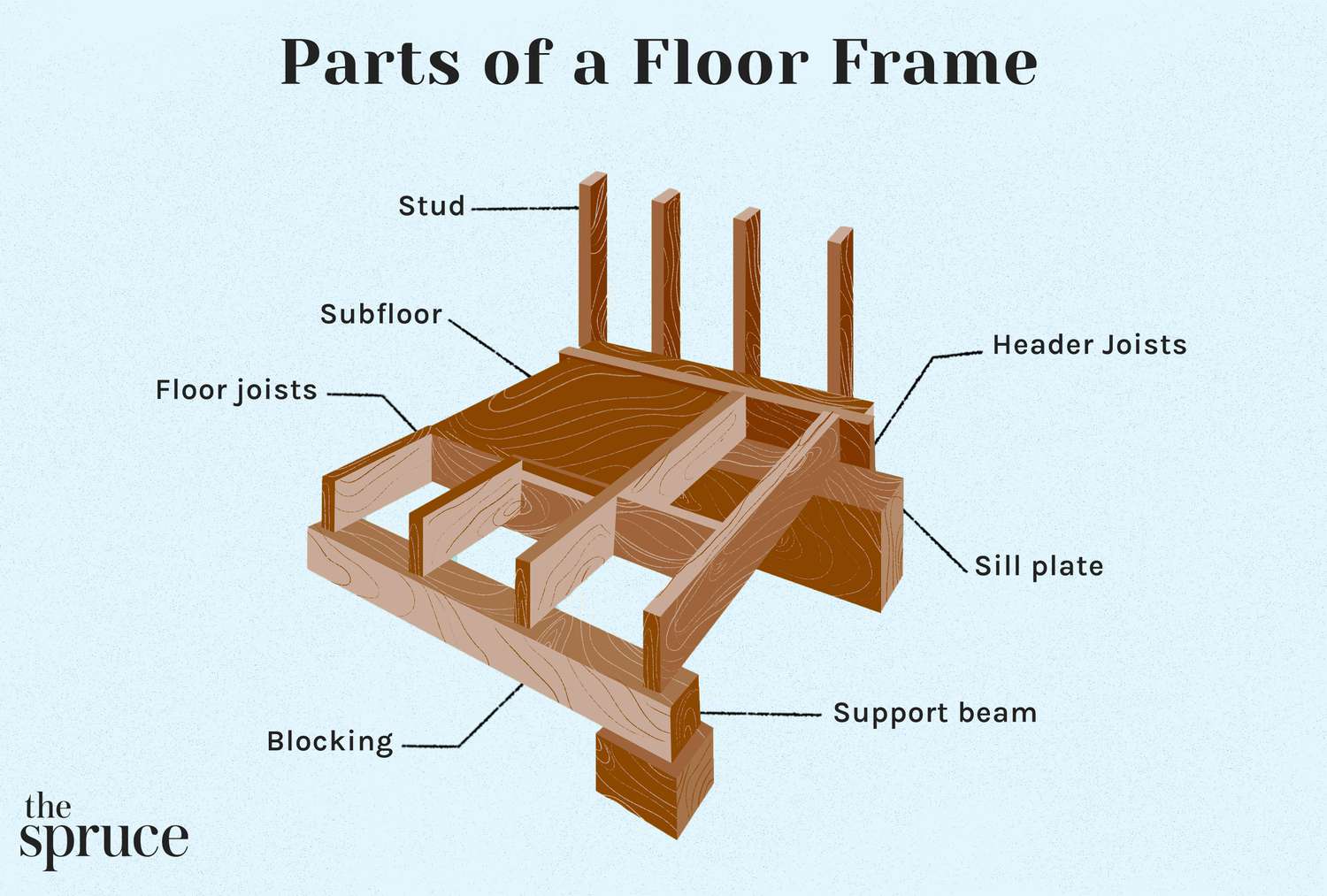
The Spruce / Michela Buttignol
The floor frame is designed with components that support and stabilize each layer of flooring. Here are the key components of a floor frame:
- Floor joist: Horizontal piece or slat that holds up flooring materials
- Header joist: Frames the opening of the floor
- Blocking: Small blocks of lumber between joists that stabilize and brace the slats
- Beam: Provides structure and supports the weight of a floor; made of lumber or steel
- Sill plate: Treated wood attached to the top of a home’s foundation; joists are fastened onto the sill plate
- Subfloor: Plywood or OSB panels attached to the floor joists; underlayment and finish flooring materials go on top of a subfloor
What Is a Floor Joist Span?
Floor joist span is the distance that a structural member such as a joist can span, from one end to the opposite end. A variety of factors play into joist span, including but not limited to distance covered, width and thickness of the joist, type of material, and spacing between the joists.
Large floor joists can carry more of a load, and spacing joists closer together also increases the load-bearing capacity of a floor. Builders have the challenge of choosing joists that are appropriate to the load they carry while maximizing space.
Figuring load capacities and picking the right floor joist sizes and spacing depends on several variables, including:
- Wood species
- Grade of the lumber
- Width and thickness of the boards
- Spacing between joists
- Load placed on the floor
- Length that the joists span
- Engineered wood floor joists, which have their own sizing and spacing requirements, are also available.
Floor Joist Load
The joist span is also governed by the weight placed on the floor. Floor loads are described using two measurements: dead load and live load.
Dead load for residential construction is generally considered to be about 10 pounds per square foot. The dead load is calculated by adding together the weight of the building materials and dividing by the square footage.
What Is a Live Load?
The term live load refers to the total load carried by the floor, including furnishing, occupants, and other objects being stored.
For residential floors, the live load is usually considered to be 30 to 40 pounds per square foot (psf), although this varies depending on the location within the home.
First-floor live loads have higher requirements than second-floor live loads (40 pounds per square foot vs. 30 psf). A room used solely for sleeping might need to carry only 30 psf, whereas a garage floor over a basement would need 50 psf or higher.
An inaccessible attic space, on the other hand, might have a live load of only 20 psf.
Types of Floor Joists
There are three types of floor joists. The differences are typically cost, lifespan, and complexity of installation.
- Solid lumber floor joists: This is the most common and affordable type of joist made from mature trees. The chosen species affect the size of boards and results in limited span distances. Care needs to be taken because using younger trees for this joist system may result in warped boards.
- I-Joists: More costly than solid lumber floor joists, this type of joist is strong, lightweight, and lasts longer than solid wood because it is made from different materials. The top of an I-joist is made of wood or laminated veneer and the center support is typically plywood. The advantage of an I-joist is that it offers long and continuous spans for residential flooring (and roofing).
- Open-Web Floor Trusses: These joists are made of pieces of cantilevered wood. Builders favor them, especially for commercial projects, because they have natural openings that more easily accommodate pipes and wires without the need for measuring and cutting holes in the wood. This type of joist is costly and installation tricky because they need to be custom-designed for each project.
Joist Span Tables
Joist span refers to the measurement covered by the joist between supporting structures, such as beams or foundation walls. Builders generally use pre-calculated tables to tell them appropriate joist spans for each lumber species, size, and spacing.
Local building codes should always be consulted since unusual situations may call for different span recommendations. True floor joist span calculations can only be made by a structural engineer or contractor.
This sample table gives minimum floor joist sizes for joists spaced at 16 inches and 24 inches on-center (o.c.) for 2-grade lumber with 10 pounds per square foot of dead load and 40 pounds of live load, which is typical of normal residential construction:
| Yellow Pine, Douglas Fir |
Redwood Hemlock, Spruce |
Western red cedar, Eastern white pine |
||||
|---|---|---|---|---|---|---|
| Joist Size | 16″ o.c. | 24″ o.c. | 16″ o.c. | 24″ o.c. | 16″ o.c. | 24″ o.c. |
| 2×6 | 9′ 9″ | 8′ 3″ | 8′ 8″ | 7′ 6″ | 7′ 6″ | 6′ 3″ |
| 2×8 | 12′ 8″ | 10′ 8″ | 11′ 0″ | 10′ 2″ | 10′ 5″ | 8′ 6″ |
| 2×10 | 16′ 0″ | 13′ 0″ | 14′ 6″ | 12′ 4″ | 12′ 9″ | 10′ 5″ |
| 2×12 | 18′ 6″ | 15′ 0″ | 17′ 6″ | 14′ 4″ | 14′ 9″ | 13′ 0″ |
Builders and contractors can adjust their choice of lumber size and spacing depending on circumstances. For example, where headroom is an issue, they can choose smaller joists and space them closer together with a shorter span. Or, where a long span is needed, such as when framing a ceiling above an open-concept room, larger joists made with a stronger lumber species can be chosen.
When Joist Spans Matter Most
As a do-it-yourselfer, you don’t need to know about joist spans to paint a bathroom or add a floor covering. But there are some instances when joist spans might matter to you:
- Building a deck
- Building a full-size addition on the side or back of your house
- Adding a second story to the house
- Putting a room addition on the house
- Adding a large tub
- Placing a hot tub on an exterior deck
Wood Species
Different wood species have different strength characteristics, with some having much higher bending strength than others. In general, slow-growing species have more growth rings per inch and are, therefore, considerably stronger than fast-growing trees. This is also true of trees within the same species—when conditions cause slow growth, the lumber from the tree will be stronger.
Common species used in house framing include:
- Southern yellow pine and Douglas fir—high bending strength
- Hemlock, spruce, and redwood—medium bending strength
- Western red cedar, Eastern white pine, and ponderosa pine—low bending strength
Lumber Grade
The fewer defects contained in a piece of lumber, the stronger it will be. Higher grades of lumber (clear, select, or 1) have fewer flaws, and will, therefore, be stronger.
A common choice for construction framing is 2-grade lumber. While not as strong as the higher grades, the flaws in 2-grade lumber are generally not enough to seriously weaken the boards. Avoid using 3- or 4-grade lumber for structural framing applications.
Lumber Size
The strength of a given joist board is most dramatically affected by the board’s top-to-bottom width. The width is considerably more important than the thickness of a board.
For example, a joist made from doubled 2x6s can span a distance about 25 percent more than a single 2×6, but a 2×12 can span about 80 percent more than a 2×6, even though it has the same amount of wood as a doubled 2×6.
-
What does a floor joist cost?
Depending on the complexity of the project, you can expect to pay between $100 to $2,000 to replace one joist.
-
How long do floor joists last?
Floor joists that are properly installed can last more than 100 years. Typically, floor joists last as long as the house does, barring any termite or moisture damage, which requires replacement.
-
What holds up floor joists?
The ends of the floor joists sit on the sill plate. The center of the joists will sit on the beam. The beam is held up by several support columns.
-
What is the difference between a floor joist and a floor beam?
A floor beam is a piece of wood that is laid horizontally to bear the weight of and support a structure. Floor joists are smaller horizontal pieces of wood that are placed in between beams to help evenly distribute weight.




